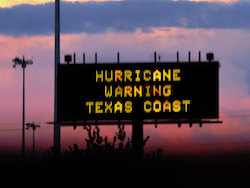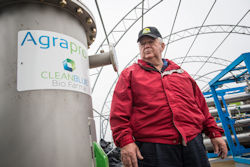SEJournal Online is the digital news magazine of the Society of Environmental Journalists. Learn more about SEJournal Online, including submission, subscription and advertising information.
 |
Covering Your Climate: Is the South Confronting Its Climate Threats?
This Society of Environmental Journalists’ special report — “Covering Your Climate: The South” — is the second in a series designed to help journalists of all kinds cover the impacts of climate change in their region, and to report on actions taken to mitigate its worst effects and preparations for what can’t be stopped. This special report begins with the extensive background overview below. In the coming weeks, we’ll publish three tipsheets with a wealth of story ideas for right now and over the coming decade, plus a resource toolbox. The project is distributed through SEJournal and the independent, nonprofit media organization Southerly, which covers the intersection of ecology, justice and culture in the American South. Southerly's Lyndsey Gilpin served as regional editor for this special report.
 |
| Evacuation sign in Houston, August 2020. Photo: jan buchholtz, Flickr Creative Commons. Click to enlarge. |
By Elizabeth Ouzts
The South is full of contradictions. From the Gulf Coast of Texas, down to the Florida Keys and up to the Chesapeake Bay, it’s home to wide-open beaches and rugged, ancient Appalachian hills. It includes coal fields and crop fields, one-stoplight hamlets and some of the world’s most vibrant cities.
It’s the birthplace of the Confederacy and the Civil Rights Movement. It’s rich with culture but poor in wealth, with nine of the 10 states with the lowest median income in the country.
So when it comes to the climate crisis, the South may have the most to lose compared to other regions of the United States. Yet it has done the least to stave it off.
The most threatened U.S. region
Scientists are more definitive than they’ve ever been that extreme weather happening now is linked to the warming planet. In the South, that means slow-moving, extremely wet hurricanes that have ended and upended lives. The year 2020 saw 30 named storms in the Atlantic, shattering the record from 2005, the year Katrina brought devastation.
According to scientists, tidal surges from future storms and rising seas from melting ice caps and swelling ocean water will only worsen in the future, swallowing parts of the Gulf and Atlantic coasts; large patches of some of the world’s most beloved cities, like New Orleans, will be submerged in water.
Flooding will increase inland as well, with precipitation expected to increase in places such as Appalachia and the Mississippi Delta.
Heat waves will grip the region’s growing cities,
decrease crop yields and sea catches,
and increase the risk of wildfire.
At the same time, heat waves will grip the region’s growing cities, decrease crop yields and sea catches, and increase the risk of wildfire. Mosquito-borne diseases like Zika will proliferate.
The region’s vast numbers of low-wealth people, as well as Indigenous people, Black people and people of color, are already bearing the brunt of these consequences.
Lurching toward mitigation
Experts believe there is still time to prevent the very worst of these impacts. Doing so means keeping planet-wide warming to 1.5 or 2 degrees Celsius — the goal of the 2015 Paris Agreement. That, in turn, requires cutting climate-warming pollutants, primarily carbon dioxide and methane, to zero by mid-century. Scientists and researchers call efforts to curb this pollution “mitigation.”
 |
| Family farmer Doug Jernigan with a methane reactor at his North Carolina farm. Photo: USDA/Lance Cheung, Flickr Creative Commons. Click to enlarge. |
On the margins, there is some dispute over how to reach the mid-century target. Combustion is still necessary to power industrial processes and vessels like long-haul trucks. How to fill in this technological gap poses conundrums.
In the South, harnessing methane from landfills and livestock manure to create renewable natural gas could be part of the solution, but critics worry it could perpetuate an otherwise unjust and polluting factory-scale farming system.
Still, there is broad consensus about where most of society’s mitigation efforts should be focused. Zeroing out greenhouse gas emissions means powering our electric grid with only carbon-free sources — wind, solar, battery storage and existing nuclear — and converting our vehicles — from cars to trains to planes — to run on electricity instead of internal combustion.
Such a dramatic transformation can’t happen overnight, of course. But we must be well on our way in this decade, making 2030 a key deadline among climate activists.
And while the technology exists today to get us 95% there or more, renewables can’t yet compete on a wider scale with fossil fuel companies, which benefit from billions of dollars in federal subsidies and have a monopoly on investor-owned utilities. Policy is necessary to change this.
Many players, but many missing
The premise of the Paris accord is that no nation — and certainly no region — can avert climate calamity on its own. But even before President Donald Trump took office and pledged to withdraw the United States from the accord, many American states and cities had begun increasing carbon-free energy and weaning themselves off fossil fuels on their own.
These jurisdictions — along with college campuses, Fortune 500 companies and even some utilities — have multiplied and doubled down in the last three years, determined to do their part to fulfill the challenge science says is necessary.
They include notable players in the South, from cities like Houston to major employers like Walmart, but not many state governments. That’s largely because the GOP — a party whose lawmakers have spent the last decade denying climate science or ignoring it — controls every state legislature but one and holds all but four governorships across this 13-state region. The Senate's Republican leader Mitch McConnell of Kentucky is among the most gleeful opponents of climate change legislation in American politics.
Over the same period of Republican climate denial — which is now waning, as the effects become more apparent and economics of renewables make more sense — the fossil fuel industry was waging an aggressive disinformation campaign that’s still bearing fruit in the South and across the country.
Even today, as most Americans believe the human-caused climate crisis is happening or will happen, research from Yale and George Mason universities show only a fifth know that conclusion is endorsed by nine of every 10 scientists.
Centralized utilities dominate
Political recalcitrance hasn’t been the only obstacle.
While the rest of the country flirted with breaking up its electric utility markets at the end of the last century, the South stalled. Vertically integrated electric monopolies still dominate the region, with a business model that favors large, centralized power plants, some powered by less-carbon-intensive nuclear, but most reliant on fossil fuels.
Solar energy is rapidly expanding here,
but most of it is in the form of vast
solar farms controlled by utilities.
Solar energy is rapidly expanding here, but most of it is in the form of vast solar farms controlled by utilities. Achieving the region’s full potential and confronting the climate crisis will require a solar panel on every rooftop that suits.
With so much of this region’s cities built and expanded after World War II, most of its communities were designed and built for two-car, single-family households. Consequently, tackling climate warming pollution from the transportation sector may be the most enduring conundrum the region faces.
And so far, the area’s huge potential to restore and replant natural forest areas to suck carbon from the air remains almost completely untapped.
Preparing for best- and worst-case scenarios
A certain amount of climate disruption is pre-cooked, due to decades of U.S. inaction: Already, the planet has warmed one degree Celsius. Sea levels will rise at least a foot this century, threatening cities from Miami to Charleston, South Carolina, to Tampa, Florida. Heat waves will persist. Extreme rainfall events will continue to threaten cropland and communities.
So, while scientists insist there is plenty still to be done to prevent these events from becoming extreme and unbearable, they also caution that communities must take action now to protect Americans against the inevitable. This activity is often called “adaptation.”
Adaptation efforts in the South have been
born of necessity. But most of the region’s
progress is a response to the present,
rather than preparation for the future.
Adaptation efforts in the South have been born of necessity. They include buying out properties in flood-prone areas, safeguarding buildings against the threat of wildfire and trying to protect residents from heat waves. But most of the region’s progress is a response to the present, rather than preparation for the future.
One of the thorniest adaptation tasks — relocating homes and communities already underwater or destined to be in a generation — has been left largely untouched. Initiatives to transition local communities long economically dependent on fossil fuel extraction to a clean energy economy hold promise, but they are just beginning.
An uncertain future
Economic pressures, changing demographics and the increasingly evident dangers posed by a warming planet are starting to change the South’s slow progress toward addressing the climate emergency.
But this positive trajectory is tenuous. President-elect Joe Biden ran on the strongest climate platform ever put forward by a presidential candidate and, thanks to Georgia’s runoff elections, Democrats will hold a razor-thin majority in the Senate. But much of Biden’s legislative agenda could still be stymied by Republicans. And the mob that stormed the nation’s Capitol Jan. 6 could foreshadow a backlash against federal climate policy much fiercer than that of the Obama years.
No matter what, Southern activists and community members who have been working on these issues for years will still work to convince major corporations, utilities, state and local governments to act.
And reporters covering the climate crisis in the region need their readers, listeners and viewers to understand that they are ground zero, but there is still the time and the technology to avoid global catastrophe.
The central conflict in their journalism isn’t and shouldn’t be between those facts and the outsized voices who would deny them. The conflict is over how quickly we will act, and how many will suffer before we do.
[EDITOR'S NOTE: For the purpose of this special report, the editors are using the definition of southern states determined by the U.S. Census Bureau, which divides the region into three sections: South Atlantic (comprising Florida, Georgia, South Carolina, North Carolina, Virginia, West Virginia, Maryland, Delaware and the District of Columbia), East South Central (comprising Mississippi, Alabama, Tennessee and Kentucky) and West South Central (comprising Texas, Louisiana, Oklahoma and Arkansas)].
 |
Based in Raleigh, North Carolina, Elizabeth Ouzts covers the state’s clean energy transition for the Energy News Network, a role she’s held since 2016. Her writing has also been featured in Environmental Health News. A former director of communications for the nonprofit Environment America, Elizabeth brings nearly two decades of experience in environmental and energy policy to her reporting.













 Advertisement
Advertisement 



